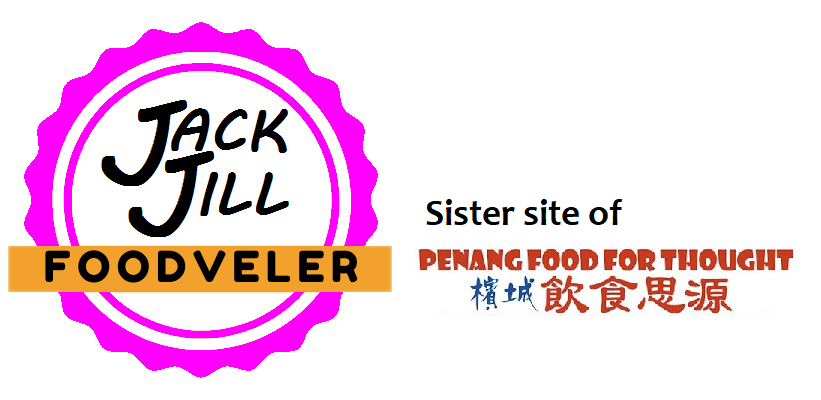Update: This business has ceased its operations.
Northeastern Chinese cuisine (东北菜) tends to differ from other regions in China due to the fact that this region (Manchuria) usually experiences harsh winters. Therefore, more emphasis is placed on preserved ingredients such as pickled cabbage (酸菜) and pickled mustard (榨菜). In addition, the staple crop in this region is wheat (usually made into noodles which is less perishable) as opposed to rice in southern regions.
Phoenix One Restaurant (东北风味馆) at Jalan Zainal Abidin is a restaurant specializing in Northeastern Chinese cuisine. The chefs in this restaurant are from mainland China, although I am not too sure whether they indeed hail from those northeastern provinces.
The dining area of the restaurant is quite small; it can hardly accommodate 30 people. However during our visit, business is quite slow anyway. I think this is because its location is rather secluded and not many passers-by are aware of its presence. On one side of the dining area is a reproduction of a famous Song Dynasty painting “Along the River During the Qingming Festival” (清明上河图).
Once seated, we are served with some snacks: Peanuts (花生, RM2.00) and Pickled Cucumber (腌黄瓜, RM2.00). It is overpriced for such small portions.
Each of us decided to order some of the supposedly-famous hand-pulled noodles (拉面). There are two types of noodle preparation: fried and soup versions. The fried method consists of stir-frying the noodles with meat, eggs, cabbage and celery; the soup noodles come with extra meat balls, boiled egg, spring onions and celery.
The Fried Noodle With Beef (牛肉炒面, RM10.00) is served with reasonably thick slices of beef. Although not exactly bad, it does not really stand out as a signature dish.
Similarly, the Fried Noodle With Meat Slice (肉丝炒面, RM10.00) is also stir-fried dish, but uses chicken and squid in place of beef. Once again, the taste is acceptable but not quite impressive.
Moving on to something soup-based, the Soup Noodle With Beef (红烧牛肉面, RM8.00) uses the same noodles but is served in clear soup stock. Somehow, the beef slices do not work as well in the soup because they become soggy and lose the meaty flavor.
As for the Soup Noodle With Hot Pickled Mustard Meat Slice (榨菜肉丝面, RM8.00), chicken slices and pickled mustard are used in place of beef. With the exception of meatballs, the dish fails to strike a chord with our taste buds.
Although Phoenix One boasts itself with its signature hand-pulled noodles, none of us are remotely satisfied with it. For one, the noodles lack of springiness; this is the reason why the noodles needs to be painstakingly “pulled” in the first place. Dragon-i is an example of how it is properly done. Unfortunately, the noodles at Phoenix One does not taste any different from regular noodles from many hawker centers.
For side orders, we ordered a serving of Special Dumpling (三鲜水饺, RM9.00) and Fried Dumpling (煎饺, RM9.00), which come in 10 pieces and 6 pieces respectively. Both dishes are meant to be eaten with garlic, but the assimilation of taste feels odd.
In any case, the dough skin is too thick and starchy, while the meat fillings inside are too little. Besides, the meat inside feels quite dry. We believe they may have been overcooked.
Finally, we placed an order for an à la carte serving of Braised Pork (回锅肉, RM15.00). A more-definitive English translation would be “twice-cooked pork”, because the pork belly needs to be simmered first, refrigerated to remove excess water, then cut into thin slices to be fried with some greens in a shallow layer of oil. This type of cooking is actually of Sichuanese origin, so I wonder why the waitress recommended it as Phoenix One’s signature dish.
Alas, this dish is a big disappointment! The meat is way too oily than we desired and lacks of the fiery wok taste. Most of the flavor comes from the mildly-spicy capsicum, not the pork belly itself.
For drinks, we have several glasses of Luo Han Guo (罗汉果, RM2.50) and Plain Water (白水, RM0.50). The former is just a normal drink available in most hawker centers; we wonder why it is so expensive.
Overall, we are not too keen to recommend this restaurant as the food is below par and does not commensurate the pricing. There are other Northeastern Chinese restaurants in Penang which we have yet to try. We probably should.



